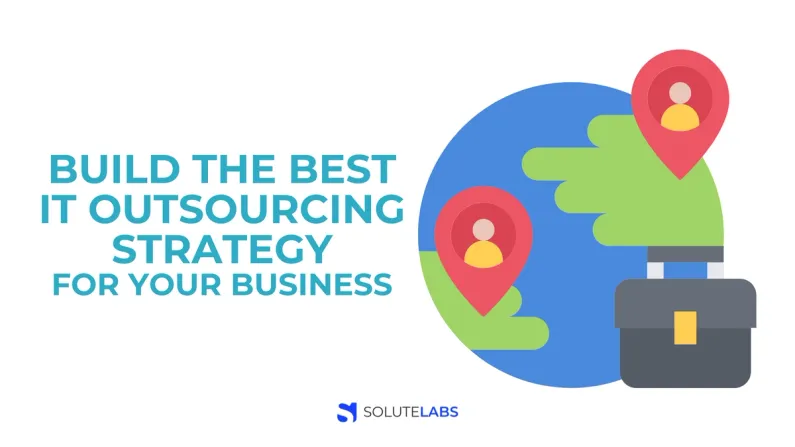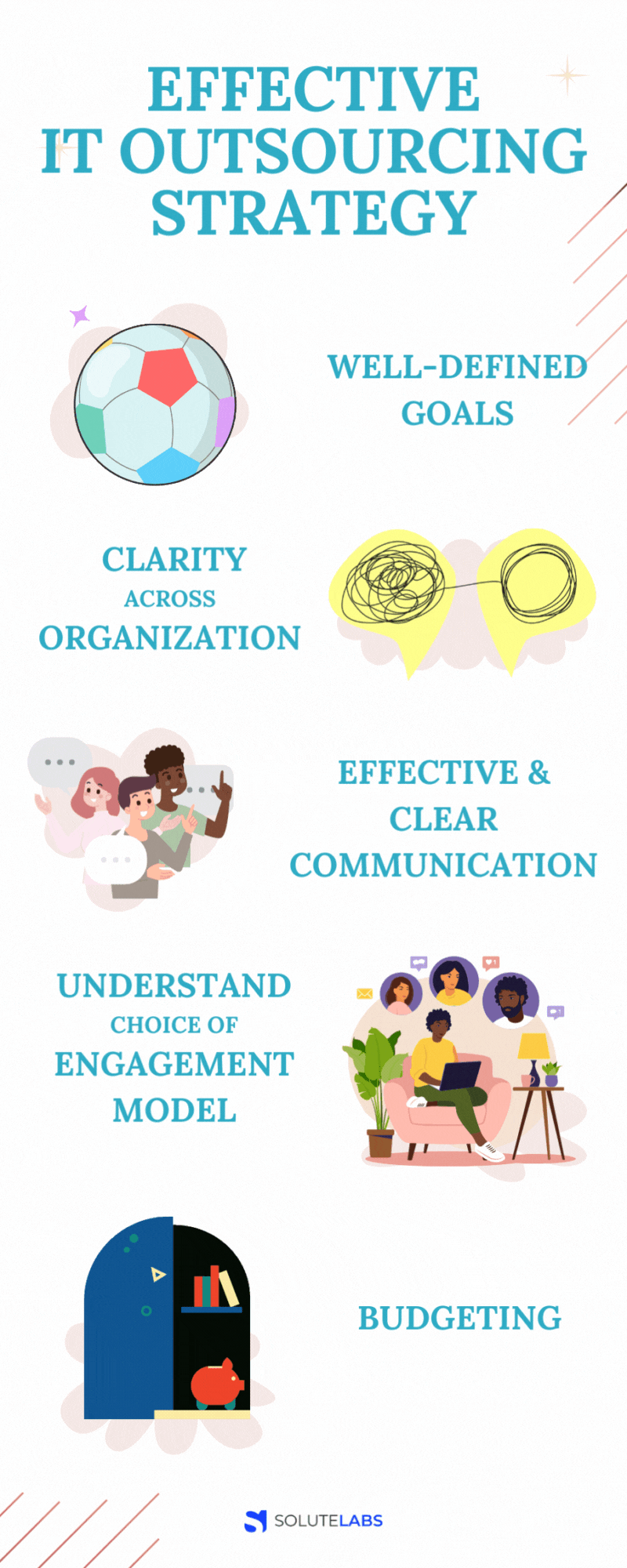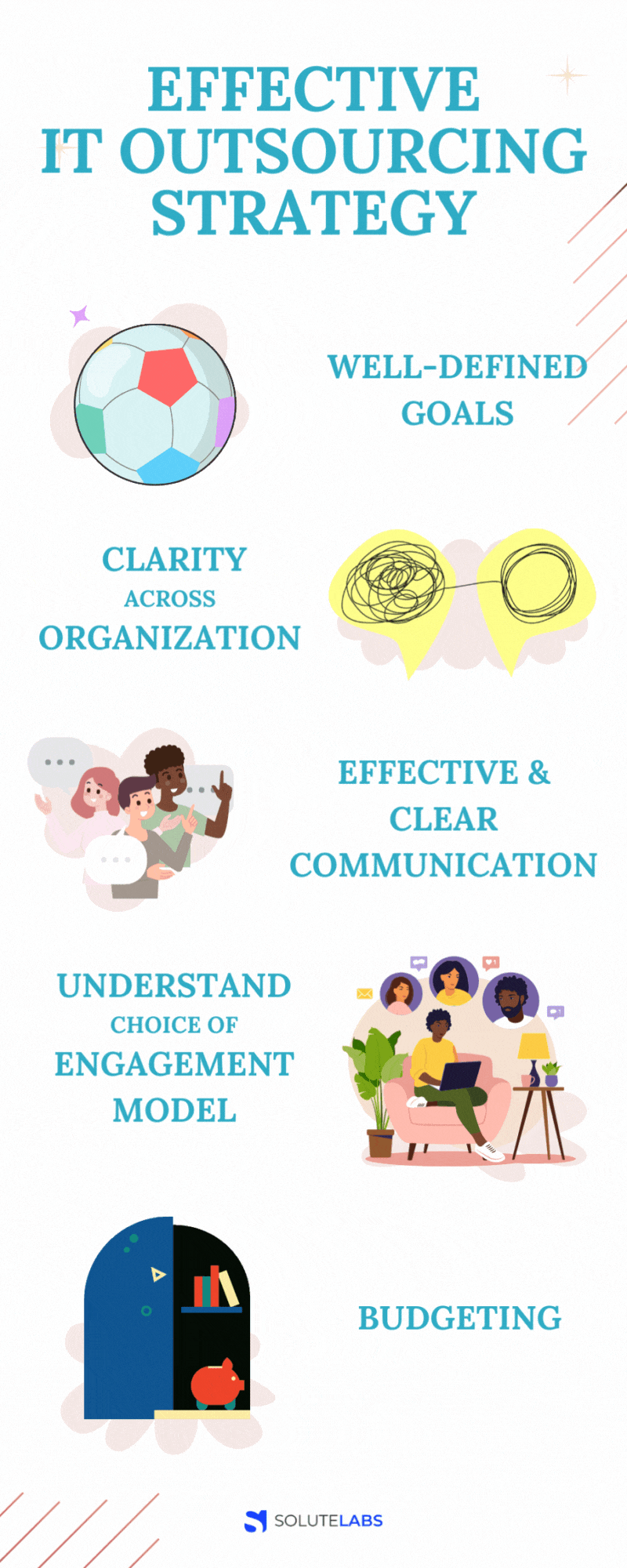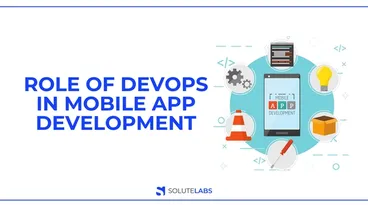Businesses today pay more attention to cost and productivity optimization and are constantly coming up with new ways to provide value to customers. The COVID-19 epidemic, a distant work environment, and a drastically changing work attitude are some of the possible causes. Contingent labor provides an on-demand, cost-effective solution.
IT outsourcing forms the core to sustainable industry competitiveness, especially for technology-intensive organizations. It helps enterprises in maintaining an edge with cost, time, project delivery, market-oriented innovations, agility, and contingent resource skills.
How big is the IT Outsourcing Industry?
The IT services outsourcing market was recorded at US$530.15 billion in 2021. This is expected to grow at a compounded annual growth rate of 8.06% to reach US$1,065.10 billion by 2030. The growth is attributed to increasing digital transformation services, advanced architectural needs, cloud migrations/technology upgrades, use of the Internet of Things (IoT), and integrations, among others.
What is an IT Outsourcing Strategy?
IT outsourcing strategies refers to the identification, assessment, analysis, and planning of outsourcing for required IT processes, and projects of the enterprise. These IT projects may include software development, cloud migrations, IT infrastructure restructuring, web development, cybersecurity, data migration, and app maintenance, among others.
In general, these identified ‘to-be-outsourced’ processes are outsourced for reasons like:
- One-time, time-constrained projects
- Difficult to perform tasks
- Constraints of skilled in-house labor
- Overburdened enterprise
- Expensive (in-house unavailable) technology required for the processes
How to build an effective IT Outsourcing Strategy?
We believe in keeping the strategy clean and precise to remain focused. A well-laid plan, based on data and requirements, helps in mitigating any unnecessary discussions, diversions and feeling overwhelmed with supplier options.
1. Well-Defined Goals:
Setting up your goals and expectations is the first and most crucial stage in creating an IT outsourcing strategy. We advise you to be very specific about the business requirements—the kind of software required, the problems it must address for your company, and the timeline for completion. This goal definition should be data-driven, process-oriented, and collated within a single document to be used as a user guide.
2. Clarity across the Organization:
When strategizing your outsourcing plan, ensure that the plan involves people from every level of the hierarchy. The strategy committee should have people from top management to the ultimate users and developers. Once onboard, the ideology of the C-suite for larger company goals syncs in line with the output to be delivered to end-users or used by junior or mid-level managers.
If it is technical outsourcing that your company is planning, ensure that members/users (within the company) involved with the pre or post-process of the outsourced service are present. Also, we believe that brainstorming with multi-tier employees helps in creating a more goal-oriented, realistic approach to strategy.
3. Effective and Clear Communication:
Apart from internal communication, clarity with external partners is equally inevitable. We strongly believe that clarity, in the initial stages of discussions with the supplier, helps in better scoping for the company and offers ample time for the supplier to revert with customized packages within the budget as well. It also helps the supplier in understanding your expectations from them.
4. Understand your choice of Engagement Model:
There are ideally three engagement models – the dedicated team model, the team extension model, and the project-based model. We'd suggest you have a complete understanding of the three models. This will help in realizing the best suitable model for your outsourcing needs. However, outsourcing service providers might have different packages and models as well. They can even offer customized models suitable to your budget and needs.
5. Budgeting:
Cost efficiency is one of the principal elements of outsourcing. Therefore, it's very important to analyze your budget before you approach any supplier or even do your supplier research. A detailed understanding of your goals will clarify your outsourcing requirements. This helps in keeping your priorities clear and negotiating for optimum cost efficiency. ‘Best in the cost’ is what we advise. We would also recommend keeping your budget slightly flexible. We say this because IT outsourcing is mostly very dynamic (turnaround could be 2/3 months even) regarding technology and innovation.
6. Right Outsourcing for the Right Reasons:
Organizations frequently adopt cost-driven IT outsourcing techniques which solely levy on considering the cost factor. However, this should be avoided. We recommend you hire the correct people who are qualified to handle your needs if you want all of your wants to be met successfully.
7. Outsourcing Vendor Analysis:
In our opinion, the key challenge lies in selecting the ideal IT outsourcing partner for a dependable and sustainable partnership. We recommend completing supplier research and analysis to narrow down your list of possibilities to a few. This analysis should be based on parameters like the supplier’s capability alignment with your business requisite, technology, and skill availability, costing, after-sale services, 24*7 customer care, near-shore/ off-shore availability, previous projects' success, testimonies, etc. Also, don't forget to look at any reviews left by past customers on independent websites. Finally, a direct supplier call can also help in structuring the best terms and price packages.
8. Be Pragmatic. Ask Questions:
Once you have your goal, budget, research and supplier on call ready, the next best step according to us is—ask questions. Be pragmatic in delivering your immediate concerns, long term visions, and what you really want to achieve with outsourcing. In case your IT outsourcing is a relatively long-term contract, make sure your company’s vision aligns with the suppliers. Apart from this, the below-listed questions should be high on your list to understand:
- Supplier’s competency on your requirement
- Supplier’s involvement in planning and consultation
- Availability of pilot or trials
- Customization options
- Availability of post-sale services
- 24*7 customer service
- Point of contact for any issue
9. Compare, Evaluate, and then select the Best Vendor:
We have always seen that vendor analysis is restricted to 1 or 2 suppliers only, usually based on someone’s recommendations or previous relationships. Apart from your well-trusted sources, you should indulge with other outsourcing suppliers as well from the industry to evaluate the industry standards, pricing and latest IT-related trends for your requirements. Create a comparative analysis and evaluate every factor with the correct weightage for each of them. Weightage is important since for some procuring companies cost would be the principal selection factor, but for some, it would be quality, and for others, the capacity.
10. Effective Legal Contract
In our opinion, your legal contract binds the entire IT outsourcing strategies together. Once you have reached the final stages of your IT outsourcing vendor selection, create a legally binding, bilaterally beneficial, well-composed and clearly outlined contract. This document shall include all the necessary elements: service requirements, duration of the contract, price, exception clauses, terms, and conditions, parties involved, etc. We would also recommend you have a strong understanding of the supplier's legal responsibilities in case of discrepancies or errors.
Also, Read: Should a Startup Outsource Software Development
Benefits of IT Outsourcing
1. Increased Focus on Core Processes:
At every level of the procedure, outsourcing services efficiently handle the company’s problems. Several times, the outsourced work is repetitive or secondary to the core operational focus of the organization. If done internally, it creates additional pressure on monitoring and coordination for the C-suite and the managers at large. With outsourcing these processes, they won't be obliged to complete any project-related work, but will always remain updated with progress. As a result, it allows them the chance to work on other crucial areas of your company's growth.
2. Reduced Capital Investments:
Information technology is a huge ecosystem and requires billion-dollar capital investments, related to technology, skilled resources and maintenance. Several cases also see the redundancy of these technologies experienced within 2–3 years, leading to zero or minimal returns on investments. By outsourcing these IT processes, organizations save hugely on capital investments and in their maintenance costs as well. The whole responsibility for the technologies and infrastructure lies on outsourcing providers.
3. Skilled and Experienced Resources:
Outsourcing contingent workers gives businesses a skill-competitive edge. Every firm is currently under pressure to hire employees with the most modern capabilities to consistently provide individualized service to its clients. A new project also requires rapid attention regarding labor, particularly in some specialized skills to meet an impending demand. Here, contingent workforce solutions assist the HR and procurement team in filling these vital talent shortages in an unstable IT employment market by locating the necessary skill-based resources
4. Requirements of an effective IT outsourcing plan:
The success of your project will depend on how well you develop an outsourcing plan, so give it your full attention. Apart from this, understand that strategy building requires coordinated effort and a well-defined business plan, which calls for the participation of multiple departments (legal, HR, operations, etc.). So, ensure equal participation of every member. Discuss, learn, evaluate, restructure, and then finalize the strategy.
Another important factor is clear, concise communication. We have been vocal about this and for a reason. You and your outsourcing partner should have a clear understanding of your requirements, terms and conditions, timely delivery, and pricing, among others.
Also, Read: How can DevOps Outsourcing Benefit your Company?
How can SoluteLabs Help you?
SoluteLabs provides a wide range of custom software development services that are tailored to meet your specific business needs. Our suite of services includes web and mobile app development, digital product design, cloud and DevOps and more.
Our team of experts has experience managing a variety of complex projects, making us the perfect choice for you. Get in touch to know more about our services!
Frequently Asked Questions
Have a product idea?
Talk to our experts to see how you can turn it
into an engaging, sustainable digital product.







